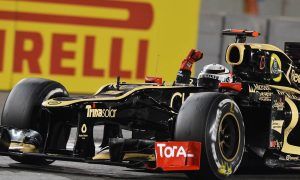
WILLIAMS GOES FASTEST… WHEN STATIONARY
While Williams slipped down from third to fifth in the Constructors’ championship, the Grove-based outfit managed to turn what used to be a weakness – pit stops – into a strength, even emerging as the best in the business. Like Mercedes, Williams used closed off wheel hubs on its FW38, which makes wheel gun engagement smoother during tyre changes.
Although blown wheel hubs help the car’s aerodynamics, they can also make pit stops more complicated. Perhaps, this would then come as little surprise to see Williams set the fastest pit stop time in nine out of 21 grand prix weekends (Bahrain, China, Russia, Spain, Monaco, Canada, Europe, Belgium, Japan), while Mercedes topped these charts eight times (Austria, Hungary, Germany, Italy, Singapore, Malaysia, Mexico, Abu Dhabi).
Interestingly, it was Williams that pioneered the blown wheel hub concept in 2013 but elected to ditch it the following season in the wake of issues during pit stops. When the problems continued into last year, the Grove engineers decided to give the hubs an overhaul and came with a more slender, less grooved design.
“If you remember, it was a real embarrassment last year,” chief technical officer Pat Symonds, who will leave the team at the end of the year, told Motorsport.com. “We had this problem with the sticking wheels, and actually we had to do a complete redesign of the hubs to get around it. And we took the opportunity to really analyse every part of it. It is really working well now.”
WHAT TO EXPECT IN 2017?
Ferrari and McLaren tried closing off their wheel hubs this year, in Spa and Interlagos respectively, in order to assess the impact with 2017 very much in mind. Bigger bargeboards, which are set to make a return next year and can divert the turbulent air from the front wheels, would make front wing arches and blown wheel hubs less necessary.






